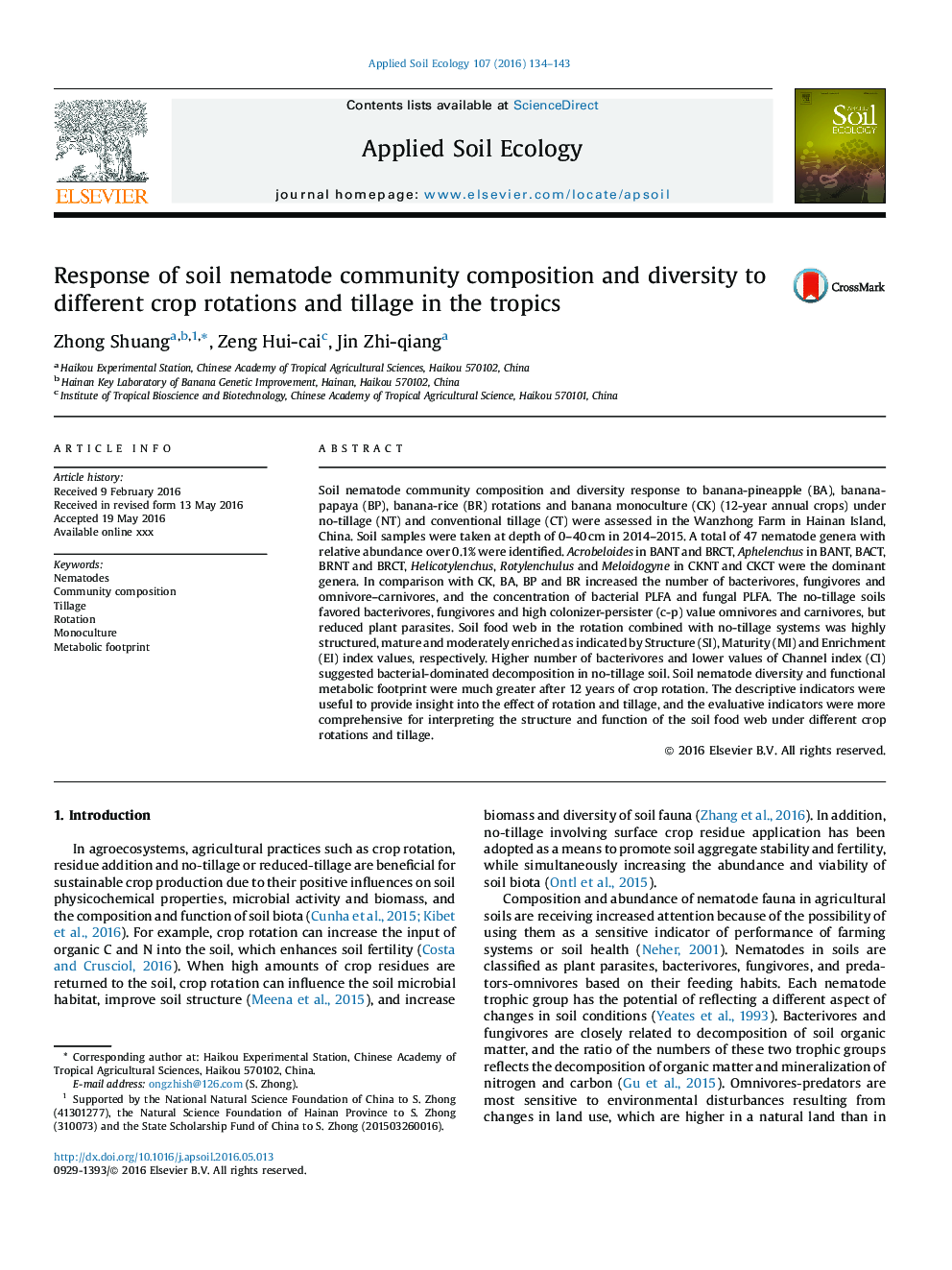| Article ID | Journal | Published Year | Pages | File Type |
|---|---|---|---|---|
| 6297606 | Applied Soil Ecology | 2016 | 10 Pages |
Abstract
Soil nematode community composition and diversity response to banana-pineapple (BA), banana-papaya (BP), banana-rice (BR) rotations and banana monoculture (CK) (12-year annual crops) under no-tillage (NT) and conventional tillage (CT) were assessed in the Wanzhong Farm in Hainan Island, China. Soil samples were taken at depth of 0-40Â cm in 2014-2015. A total of 47 nematode genera with relative abundance over 0.1% were identified. Acrobeloides in BANT and BRCT, Aphelenchus in BANT, BACT, BRNT and BRCT, Helicotylenchus, Rotylenchulus and Meloidogyne in CKNT and CKCT were the dominant genera. In comparison with CK, BA, BP and BR increased the number of bacterivores, fungivores and omnivore-carnivores, and the concentration of bacterial PLFA and fungal PLFA. The no-tillage soils favored bacterivores, fungivores and high colonizer-persister (c-p) value omnivores and carnivores, but reduced plant parasites. Soil food web in the rotation combined with no-tillage systems was highly structured, mature and moderately enriched as indicated by Structure (SI), Maturity (MI) and Enrichment (EI) index values, respectively. Higher number of bacterivores and lower values of Channel index (CI) suggested bacterial-dominated decomposition in no-tillage soil. Soil nematode diversity and functional metabolic footprint were much greater after 12 years of crop rotation. The descriptive indicators were useful to provide insight into the effect of rotation and tillage, and the evaluative indicators were more comprehensive for interpreting the structure and function of the soil food web under different crop rotations and tillage.
Related Topics
Life Sciences
Agricultural and Biological Sciences
Ecology, Evolution, Behavior and Systematics
Authors
Zhong Shuang, Zeng Hui-cai, Jin Zhi-qiang,
